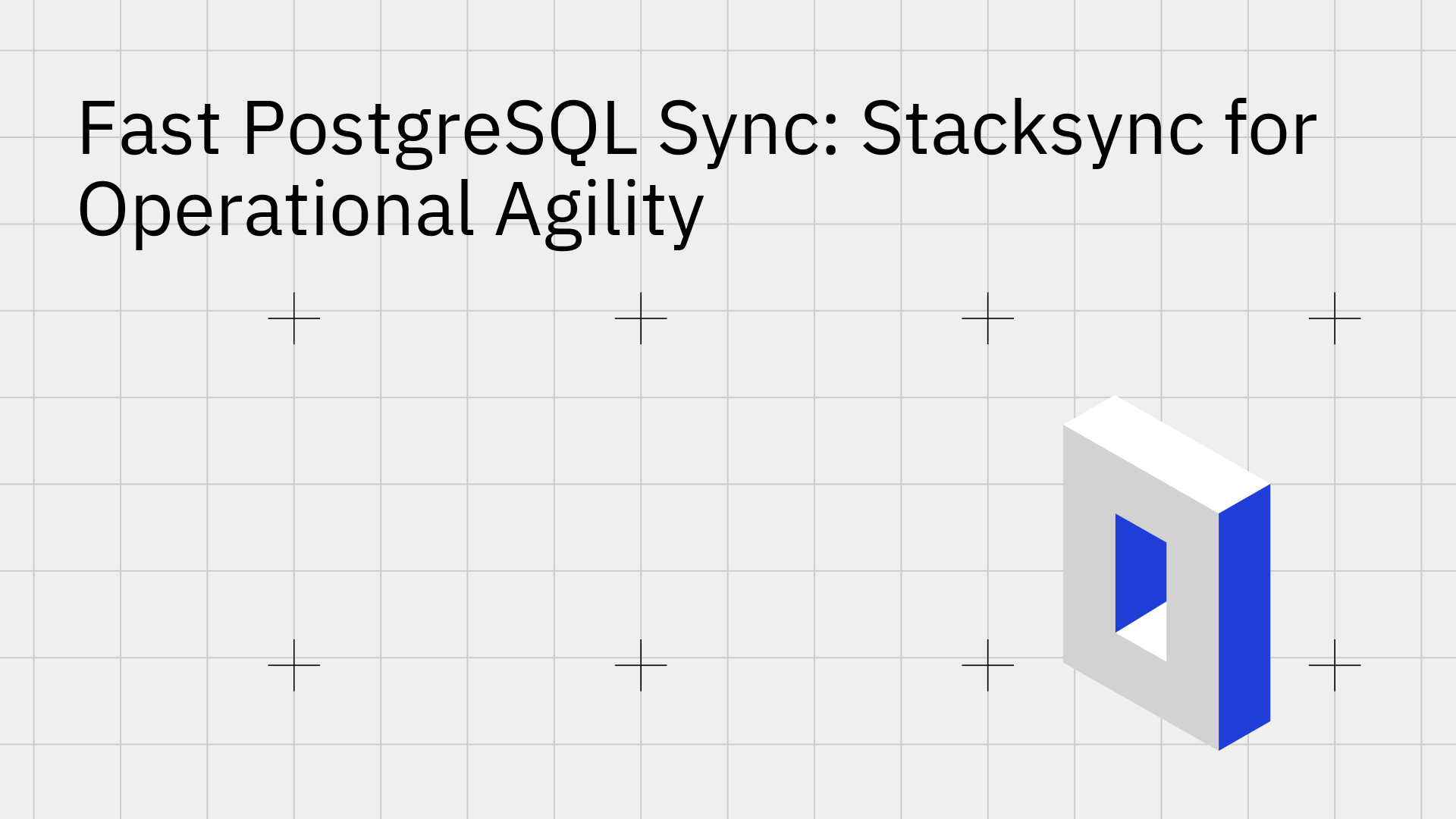
In today's fast-paced business environment, having real-time data isn't just a benefit; it's a necessity for staying competitive. PostgreSQL stands out as a powerful and widely adopted open-source database, trusted by companies for its reliability and advanced features.
However, a significant challenge arises when you need to sync this data across your organization. Traditional methods for syncing PostgreSQL databases are often complex, slow, and drain valuable engineering resources, directly hindering your operational agility. Stacksync is the modern, high-speed solution designed to solve these synchronization challenges, empowering your business to move faster and more efficiently.
Keeping data consistent across multiple systems is a common struggle. For teams relying on PostgreSQL, this challenge is particularly pronounced, leading to several pain points.
Many organizations rely on custom scripts or outdated tools to move data. This approach is fraught with problems:
PostgreSQL offers native methods for data replication, such as streaming and logical replication [6]. Streaming replication continuously sends updates from a primary server to one or more standby servers, which is excellent for high availability and load balancing. Logical replication offers more flexibility by allowing you to replicate specific tables or even rows.
While powerful, these native solutions require deep technical expertise to configure and manage. Setting up reliable replication involves careful planning around network configurations, security, and failover strategies to ensure data consistency without impacting performance [7]. This complexity often makes native replication a daunting task for teams that need a quick and scalable solution.
So, what are postgresql database sync tools? These are specialized applications designed to automate moving data between PostgreSQL instances or connecting PostgreSQL to other systems like CRMs, ERPs, and data warehouses. They come in different flavors, generally categorized by how they move data:
Businesses use these tools to solve critical operational needs, including:
The market for postgresql database sync tools includes a variety of options, each with its own strengths and weaknesses.
pgsync are great for developers who need to quickly move data between two PostgreSQL databases. They are fast and scriptable but lack a user-friendly interface, real-time capabilities, and support for syncing with non-PostgreSQL systems [3].Many of these tools struggle to implement Change Data Capture (CDC) efficiently. Capturing every data change in real time without overwhelming the source database is a complex engineering problem that often creates a trade-off between speed, cost, and complexity.
Stacksync is a next-generation data integration platform built for speed, reliability, and simplicity. It provides a fully managed solution that eliminates the complexity of building and maintaining sync infrastructure, allowing you to focus on what matters most: your business operations.
Our platform offers true PostgreSQL two-way sync integration and workflow automation, enabling you to connect your database to over 200 business applications seamlessly.
!A diagram showing the Stacksync logo in the center, connecting a PostgreSQL database icon to other application icons like Salesforce (CRM), NetSuite (ERP), and Snowflake (Data Warehouse).
Fast, reliable PostgreSQL sync unlocks powerful new capabilities for your business. Here are a few concrete examples of how our customers use Stacksync.
Development teams often need to build internal applications on top of production data. Instead of querying the production database directly and risking performance degradation, you can use Stacksync to maintain a real-time replica in a separate PostgreSQL instance. This gives your teams the live data they need without ever impacting your core application's performance.
Imagine your sales team having instant access to product usage data, new user sign-ups, and billing changes directly within their CRM. With Stacksync, you can sync PostgreSQL and Close in real time with two-way sync. When a user's status changes in your PostgreSQL database, it's instantly reflected in Close, allowing sales to act on timely information. Conversely, updates made in Close can be synced back to your database, keeping all systems aligned.
Your support team's effectiveness depends on having a complete picture of the customer. By implementing a comprehensive sync between HubSpot and PostgreSQL, you can give support agents access to product usage, subscription tiers, and technical logs right inside HubSpot. This eliminates the need to switch between applications and empowers your team to resolve issues faster and more effectively.
Setting up a high-speed PostgreSQL sync shouldn't be a months-long project. With Stacksync, you can be up and running in minutes.
Ready to see it in action? Experience the speed and simplicity of Stacksync for yourself.
Start a Free Trial Book a Demo
The challenges of traditional PostgreSQL synchronization, latency, complexity, and high maintenance costs are no longer barriers to operational agility. While native replication and older tools have their place, they can't match the speed, reliability, and simplicity of a modern, managed solution.
Stacksync provides a fast, scalable, and secure platform that unlocks the true value of your data through real-time, two-way sync. With a no-code setup, robust error handling, and enterprise-grade security, you can finally capture every Postgres change without coding and empower your teams with the data they need, exactly when they need it. In an era where data speed equals a competitive edge, Stacksync is the essential tool for any organization using PostgreSQL.